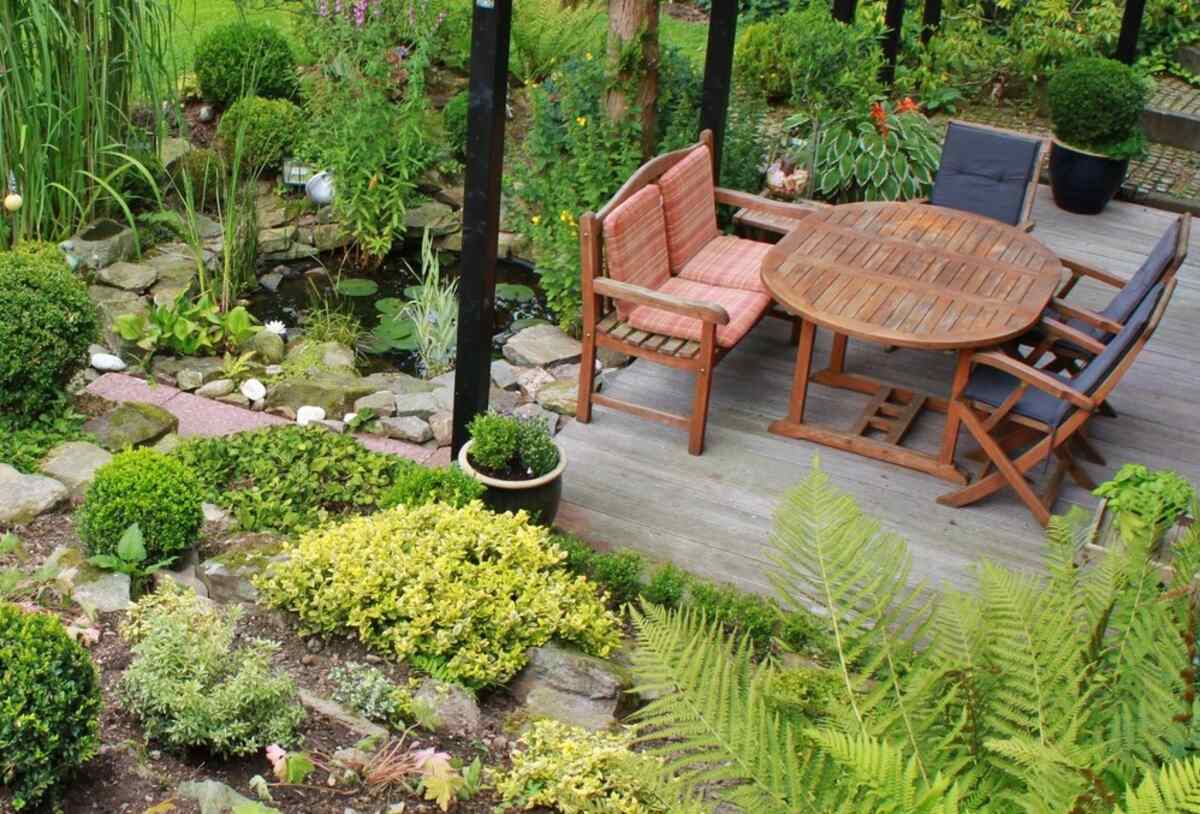
We all want to enjoy our outdoor spaces, but not everyone has flat property, and that’s a dilemma. We’ll teach you how to terrace a garden in your backyard while adding depth and function. Whether you have a sloped yard or a home on a steep hill, you can go to the next level when you build terraces.
Homeowners can absolutely cultivate landscaping ideas into a timeless project to enjoy, even on uneven ground. It’s a matter of hours, days, weekends, or even a few months, depending on the breadth of your landscape design.
Here are considerations and guidelines for creating your terraced garden:
How Will You Use Your Terrace Garden?
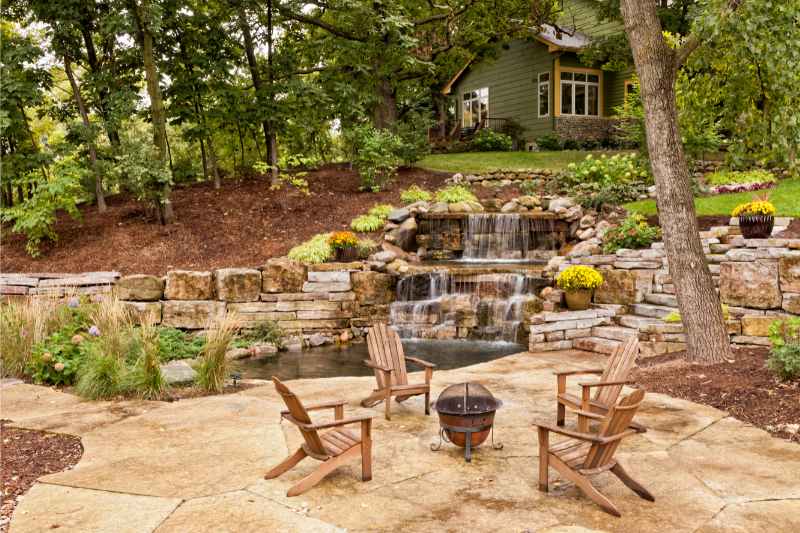
Before designing your terraced garden, list the ways you want to use your garden.
- Do you want a flat area to create more living space outdoors?
- Do you want to add landscaping, water features, or flowers?
- Would you like to grow a vegetable garden?
- Would you like your backyard to match the front yard design style by using the same colored stone walls, berms, and garden features?
- Would a natural stone retaining wall to prevent soil erosion and runoff in your terraced yard be useful?
If you have a clear understanding of your garden’s use, you can determine the design and materials you need to execute your plan. Once your dream is clear, you’ll need to decide on your budget for your sloping garden.
Cost to Terrace a Yard
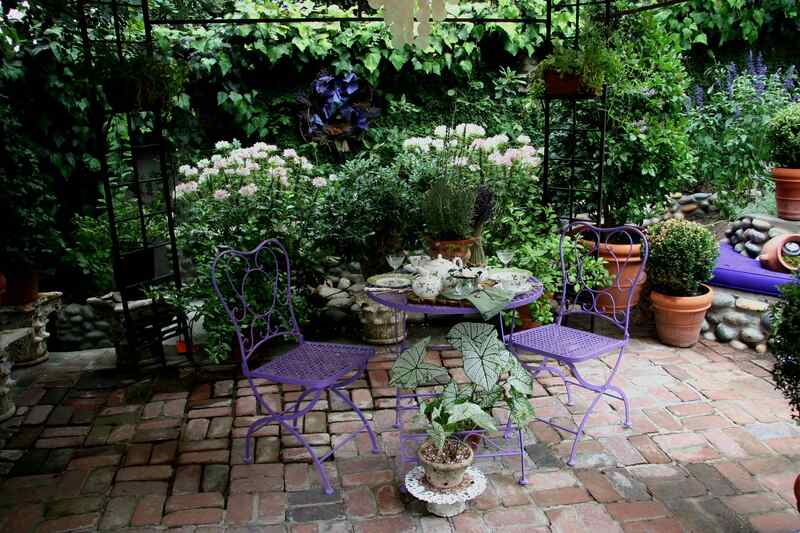
The cost to create a terraced garden depends on several factors: materials for the retaining wall, its size, and especially, whether you build it yourself or hire a contractor.
A professional landscaping company can install the wall for you, with the average cost for a retaining wall ranging from $3,500 to $9,400. If you DIY, materials for terracing a garden can range from $4 to $20 per square foot.
You may also incur other DIY costs:
- Tools: Compactor or grader
- Rebar and stakes: Used to secure your building materials
- Fabric: To hold the soil in place and distribute weight evenly
Here’s a list of the average price per square foot of some of the more common materials used:
- Corten Steel/Metal $42 – $150
- Rammed Earth/Chalk $20 – $30
- Boulder/Rock $20 – $90
- Cinder Block $15 – $40
- Brick $17 – $43
- Wood Timber $13 – $35
- Poured Concrete $20 – $40
If you decide to hire someone to do the work for you, labor costs vary depending on the type of materials and size of the wall; however, you can expect to pay around $20 to $53 per square foot (materials and labor) for professional installation.
Create Your Terrace Garden Design
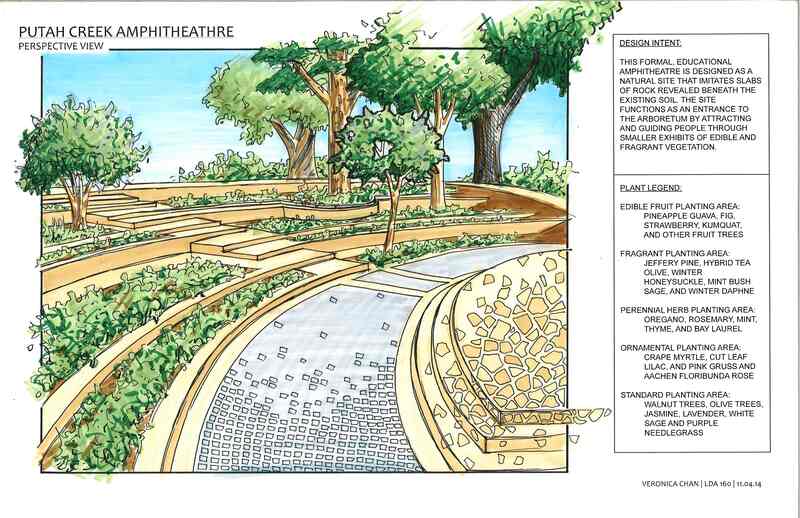
Now that your budget and purpose are set, it’s time for the fun part — designing your terrace garden. You’ll want your garden projects best suited for the slope of your backyard and the function of the terraced garden.
Material options for your sloped garden spaces include:
- Treated wood and landscaping timbers
- Concrete blocks and walls
- Bricks and pavers
- Stones and boulders
Wood tends to blend with your natural outdoor surroundings, whereas masonry and stones create more of a focal point.
There are plenty of terraced garden bed ideas and raised garden bed hacks to artistically design with your favorite annuals and perennials. Beautiful lawn levels will be a joy to mow, and you’ll mulch to your heart’s content.
How to Build a Terrace Garden
How you build your terrace garden depends on the slope of your land. If it is a very steep hillside, you may need to call in an expert for help. But in most cases, terracing a hill can be a DIY project.
To build a terraced garden yourself, you need to consider how confident you are in your physical strength and abilities. There are many resources that tell you how to fill your terraced flower beds inexpensively using a permaculture practice called hügelkultur.
Step by Step, Bed by Bed
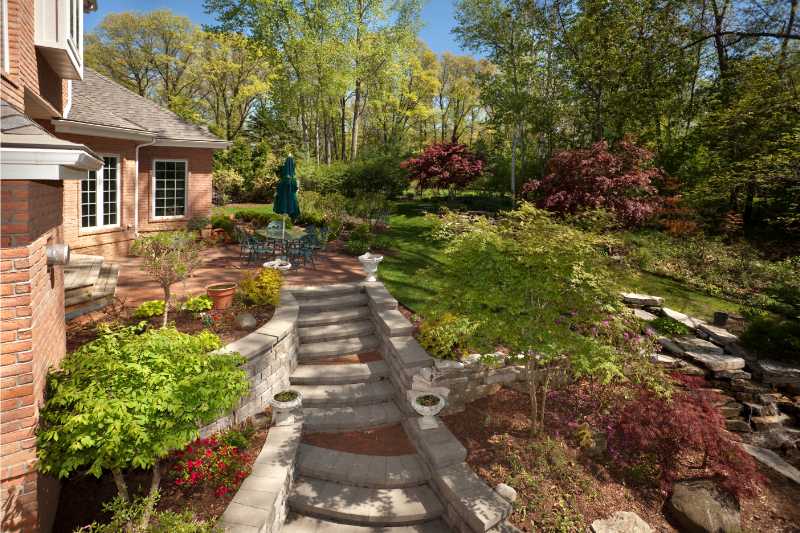
If you think it’s a larger job than you can do, you might be wise to hire a professional for terracing the hillside, but if you’re a DIY warrior, here are the steps to begin:
- You’ll need to calculate the rise (vertical distance) and the run (horizontal distance) of your slope. These measurements and the number of garden beds you want to create will help you determine the height and width of each bed.
- Dig your trenches. How deep you dig depends on the number of tiers you want to create. The more levels you build, the deeper you must dig into the first tier. With each tier, you’ll need to be sure that the front and two sides of each terrace level are even.
- Consider what to do with the extra soil. Remember, when creating a terraced garden, you will be “cutting” into the slope and removing a lot of topsoil.
- Add your building materials. This could be landscape timbers, pavers, stones, bricks, etc. Be sure to anchor them down and level out the soil behind them, then repeat for additional tier levels.
Note: Depending upon what type of wall you’ll be constructing for your terraced area, you’ll probably need to backfill the wall with gravel for stability and erosion control and make weep holes with PVC pipes for drainage.
Finish and Finesse Your Terrace Garden
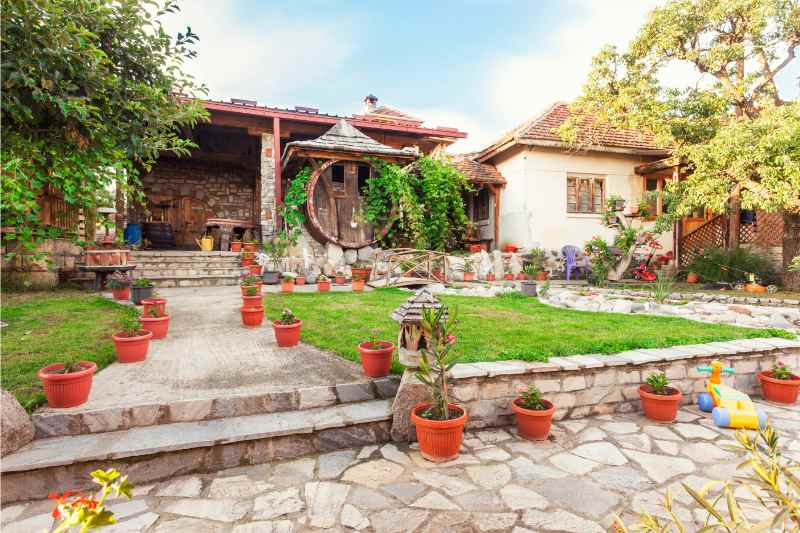
With the foundation of your terrace garden built, you can now add shrubs, ground cover, flowers, and other greenery to your hillside garden. The options are endless. Magic happens when you mix textures, heights, elements, and colors to create your own unique outdoor space.
If you have a hillside or steep slope that you’d like to transform into an enjoyable outdoor space, terrace gardening is a great option. It does involve some work and research upfront, but the end result is a stunning space that you can enjoy for years to come.
FAQ About Terrace Gardens
How are Terraces Created?
Terraces are made by trenching and moving soil, then creating retaining walls for the soil. You can make level planting beds for flowers, plants, and vegetables and create grassy areas that extend your outdoor spaces.
What Materials do I Need to Make Terraces?
There are a number of different materials you can use to build your terraced garden:
- Concrete blocks
- Pavers
- Wood logs or lumber
- Stones
- Boulders
Can I Make my Terrace Garden Accessible for a Family Member?
Yes. For a slight slope, you can follow the ADA guidelines for ramps and create a path down a terraced garden. If the slope is too steep and steps are required, consider raised flower beds and smooth pathways on whichever level is accessible.
Take Your Landscaping to Another Level
When choosing your design elements for terraced landscaping, remember that this area, like other garden areas, will require maintenance to retain its beauty. Choose plants, bushes, and shrubs that will thrive in a hillside environment. Seek guidance from a local landscaping expert on the best plants for your space.
Main Image Credit: Pxhere